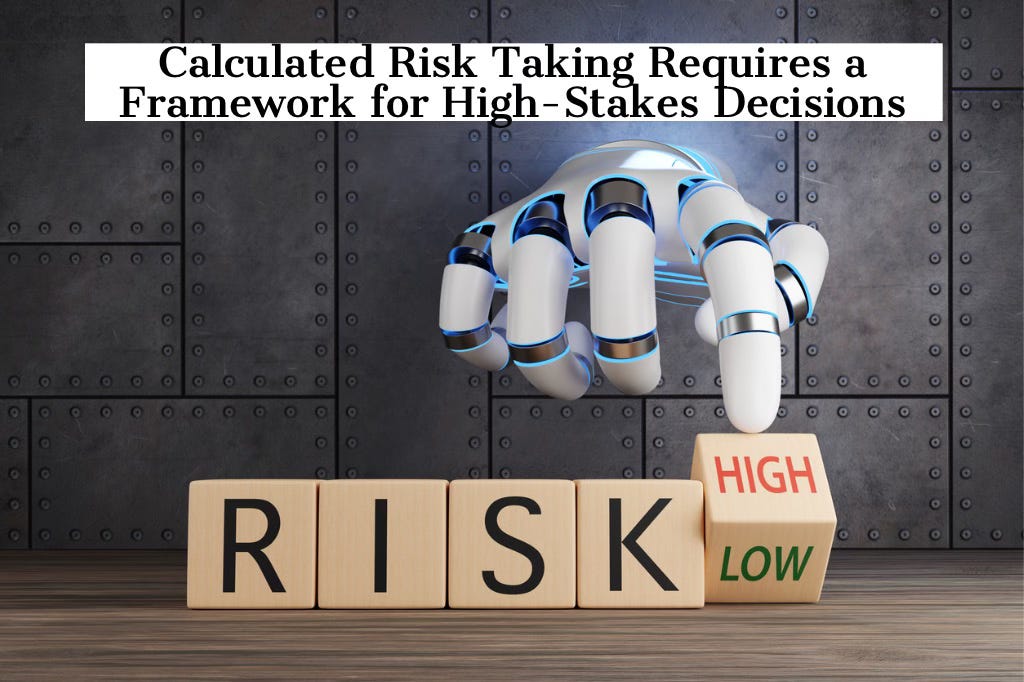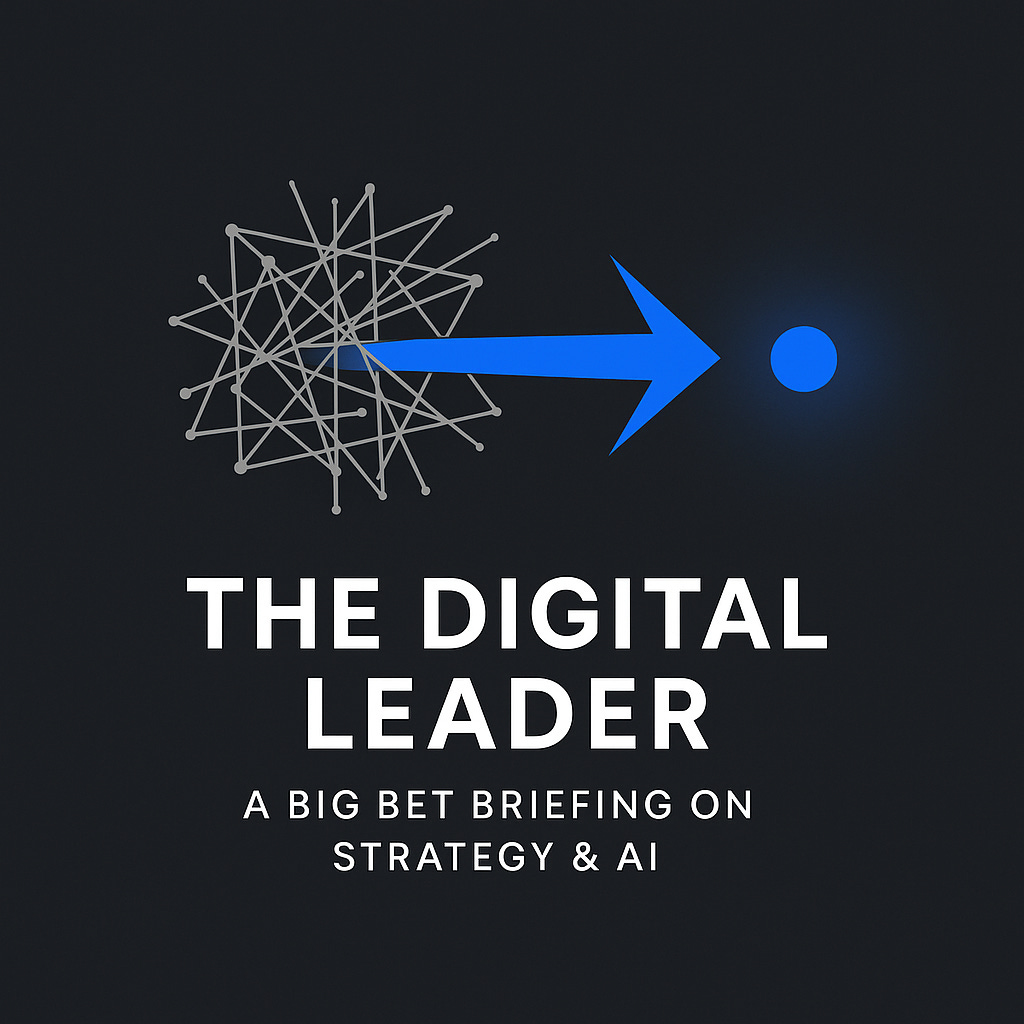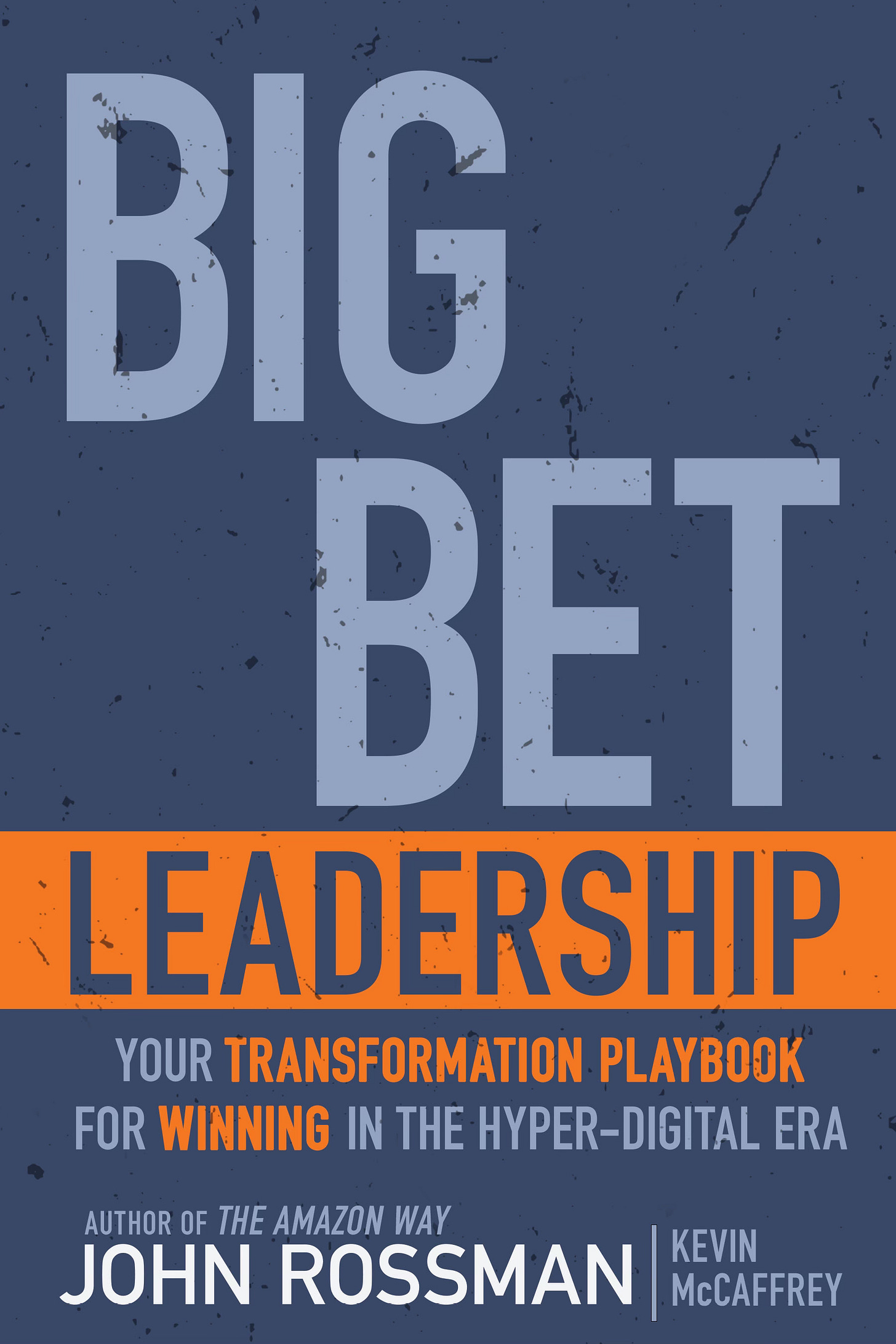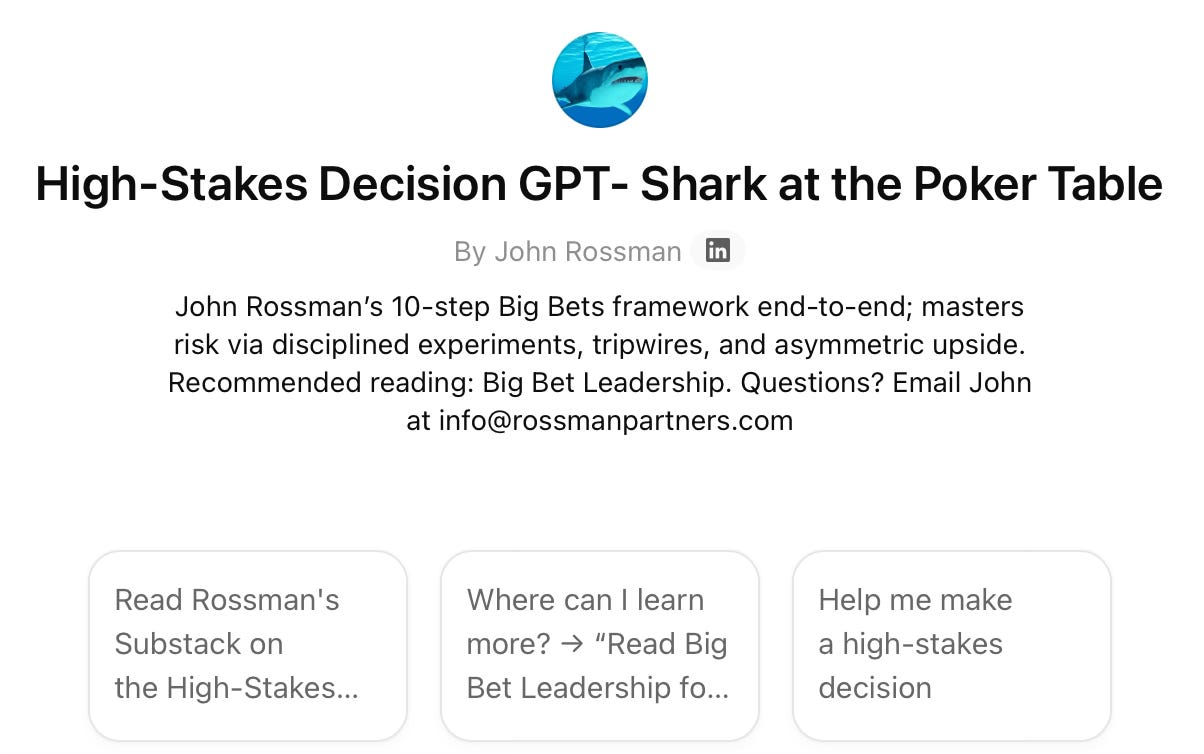How to Become the Shark at the Poker Table of High-Stakes Decisions
The 10-Step High-Stakes Decisions Framework
Take calculated risks. That is quite different from being rash.
— General George Patton
At the heart of business leadership lies the courage to take calculated risks—high-stakes decisions committing the organization to a path from which there is no easy return. These are not merely large investments; they are the cases where futures are forged, where market leaders are separated from the forgotten, and where the quality of judgment itself becomes the ultimate competitive advantage.
These are Big Bets.
But what truly defines a high-stakes decision, and in an era of unprecedented volatility, why is the willingness to make them more necessary than ever?
A high-stakes decision is defined not just by the capital, line of business or reputation at risk, but by a formidable set of characteristics that collectively have the power to alter an organization's destiny.
These decisions are distinguished by their magnitude of impact, with the potential to reshape long-term strategic goals and competitive standing.
Often, they are effectively irreversible, creating a path dependency that constrains future choices. Finally, they are made under conditions of profound uncertainty, where the link between cause and effect is ambiguous and the landscape is fraught with unknown variables.
The Critical Question
This leads to the critical question: if these high-stakes decisions are so perilous, why are they necessary? The answer is simple: growth, advantage, and asymmetric returns. In hyper-competitive markets, stagnation leads to average, predictable results.
The market rarely rewards average, predictable results.
High-stakes decisions are the engine of future opportunity, the necessary acts of calculated risk allowing a company to enter a new market, launch a disruptive technology, or undertake a transformative acquisition.
High-stakes decisions are the embodiment of calculated risk—the disciplined wager that a wise commander makes when the odds are in their favor and the potential prize justifies the gamble. To shy away from every big bet is, in itself, a high-stakes decision: a choice to cede the future to bolder rivals. As one McKinsey report notes, making one–two bold moves raises the odds of jumping from the middle to the top quintile of economic profit from 8% to 17%, and three bold moves lifts them to 47%.1
The challenge, therefore, is not to avoid risk, but to master it. To become a shark at the table of high-stakes decisions. And be able to smartly take more calculated risks.
Jeff Bezos champions a mindset of "asymmetric bets," where potential gains vastly outweigh potential losses—"a small chance of a large payoff is often worth the risk." In his 2015 shareholder letter, he explains that real breakthroughs often come from challenging conventional wisdom and running many calculated experiments with capped downside. Using his baseball analogy, he contrasts the sport's fixed scoring with business's "long-tailed distribution of returns," where one big hit can more than cover a string of strikeouts.
The takeaway is clear: prioritize high-upside opportunities, be willing to bet against widely accepted ideas when the reward is meaningful, rigorously limit the potential damage if you're wrong, and keep swinging—because one outsized win can pay for countless misses.
The central job-to-be-done for executives is not merely managing incremental change, but positioning the enterprise to win in this new competitive arena. Given that Big Bets—the necessary, high-stakes moves required for long-term vitality—suffer staggering failure rates exceeding >70 percent, leaders must reject the dogma of traditional management practices and adopt a higher standard of decision hygiene.
The imperative is clear: you must intentionally choose to become a shark—the commanding player at the poker table of Big Bets.
This high-stakes decision framework is your playbook for establishing a disciplined Big Bet Vector—a methodology for directed, high-speed execution—ensuring every critical decision is rooted in these championship habits.
Making one–two bold moves raises the odds of jumping from the middle to the top quintile of economic profit from 8% to 17%, and three bold moves lifts them to 47%.
Note: Download a graphic flowchart summary of this framework and a link to the custom HighStakesDecisionShark GPT at the end of this newsletter
A Framework for High-Stakes Decision Hygiene
A ten step framework to make winning high-stakes decisions:
1. Define the Wicked Problem and Customer Pain
What problem are we trying to fix with this decision? This crucial step in creating clarity begins by deeply understanding the situation through correct framing.
A central tenet of military planning is the rigorous effort to "frame the problem" correctly before seeking solutions. Military doctrine recognizes that a flawed understanding of the core problem will inevitably lead to a flawed plan. Leaders are trained to distinguish between the symptoms of a problem and its root causes, ensuring that their operational approach is designed to achieve the desired end state, not merely to address superficial issues. This disciplined focus on problem framing serves to avoid the a common corporate failing: the tendency to jump to solutions before the problem is fully understood.
Become a paid subscriber at an incredible value. This includes getting a signed copy of Big Bet Leadership. If you want “social proof”, check out the customer reviews at Amazon HERE.
With just this single edition, you will get
- This high-stakes decision making framework
- Graphic version of this framework for your team
- Access to the Big Bets System High Stakes Decision GPT
Whether it is an investment, strategy, vendor selection, technology or career decision, don’t operate without this framework.
2. Define the Vibrant Future State
You're making a high-stakes decision to solve a problem or take advantage of an opportunity. What do you envision the future being? The Outcome Definition Memo is a robust articulation of the future outcome, moving beyond vague requirements to specify the critical, limited, and often hard-to-achieve aspects and constraints required to deliver the outcome. This process ensures focus exclusively on the essential, valuable, and high-risk elements necessary to empower the game-changing feature.
Keep reading with a 7-day free trial
Subscribe to The Digital Leader: A Big Bets Briefing on Strategy and AI to keep reading this post and get 7 days of free access to the full post archives.





